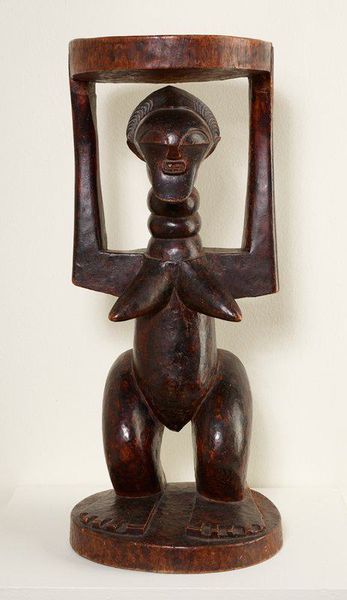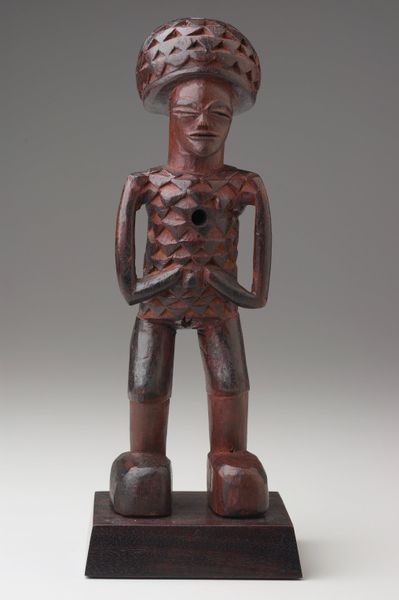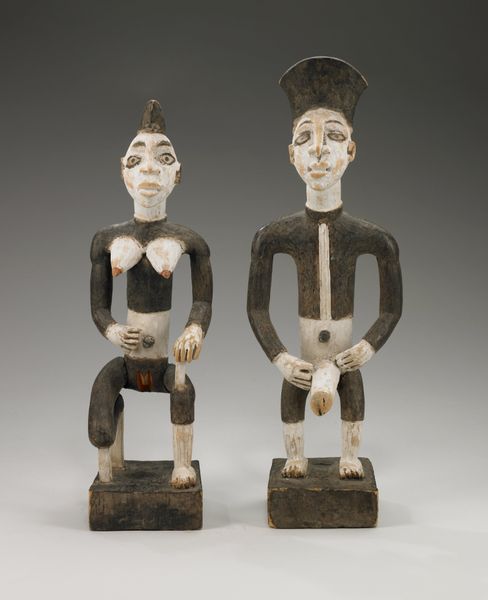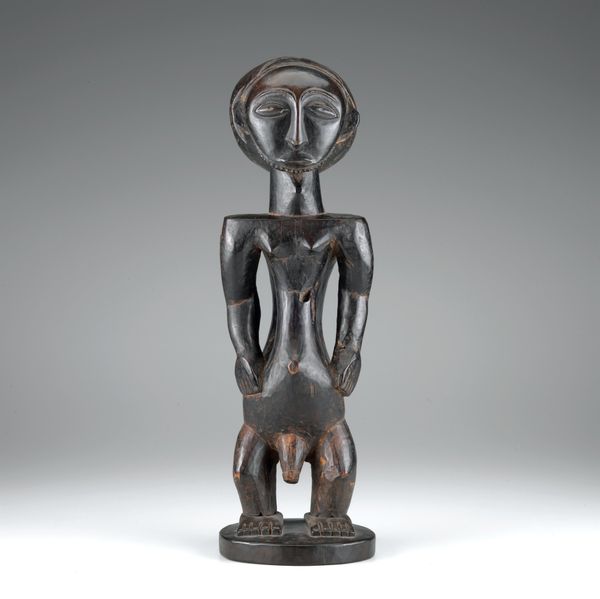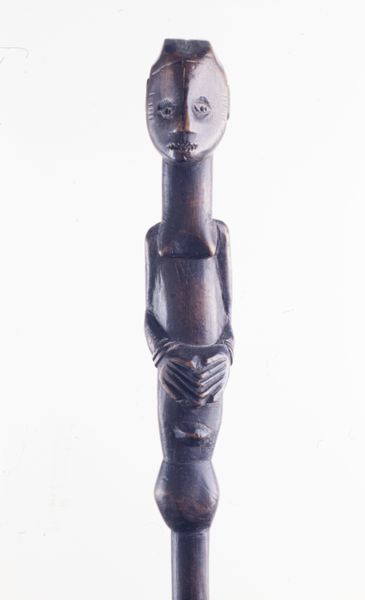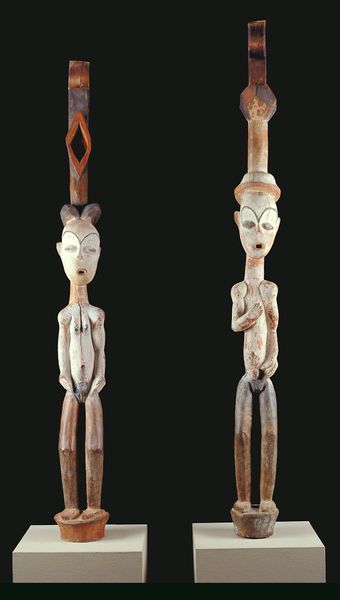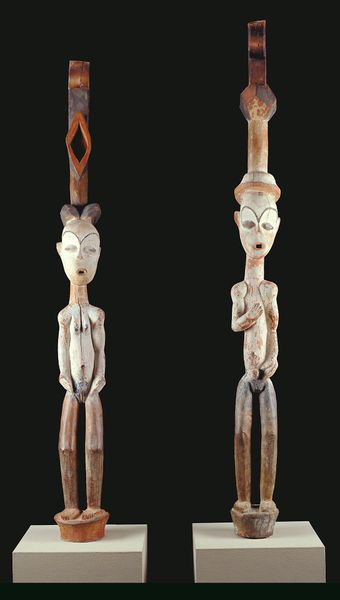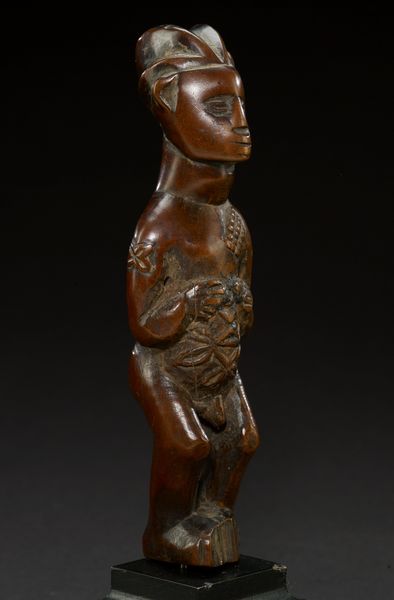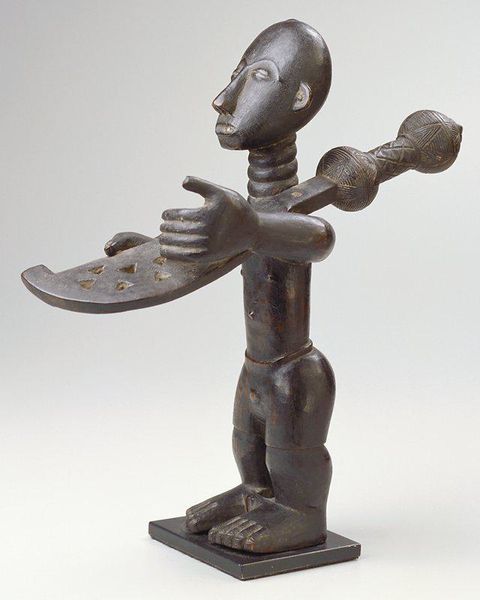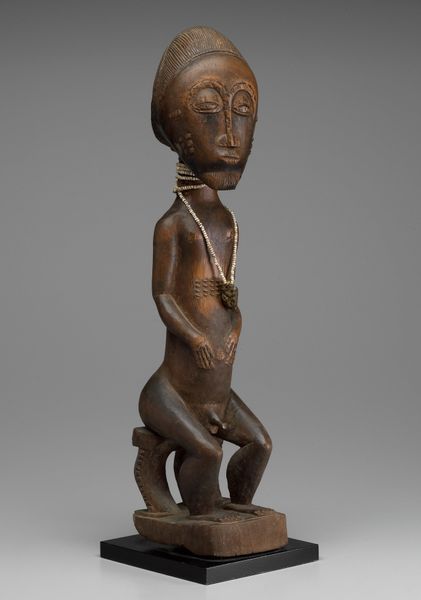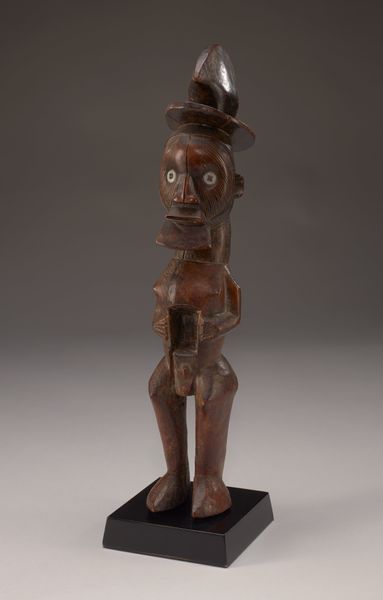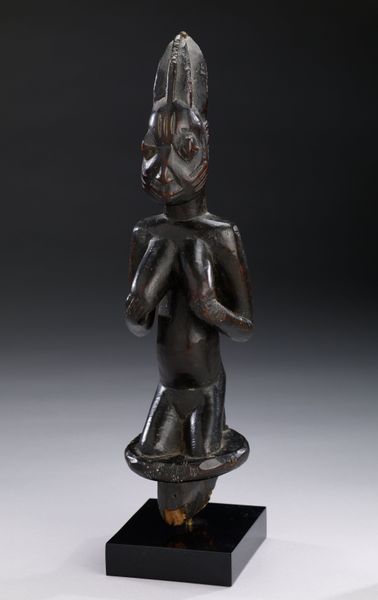
sculpture, wood
#
african-art
#
sculpture
#
figuration
#
sculpture
#
wood
Dimensions: 15 1/8 x 7 x 3 in. (38.4 x 17.8 x 7.6 cm)
Copyright: No Copyright - United States
Kwaku Benpoh made this pair of figures for a shrine group, but we don't know exactly when or from what kind of wood. Look at how the carving celebrates the material. It's not trying to trick you into thinking it's flesh and blood. I mean, these are stylized representations, right? The artist has clearly enjoyed the push and pull of working the wood. The textures are smooth, but there are also visible tool marks, which remind us of the hand that made it, and the process they used. I'm particularly drawn to the space between the figures, how their forms intertwine. The arm that reaches around, that disk hanging from the other's neck. It's a shared space, suggesting a relationship that's both intimate and a little mysterious. The figures are individuals, sure, but they're also connected, maybe even interdependent. This reminds me of work by Willie Cole. Both artists find ways to imbue everyday materials with a sense of spiritual and cultural significance. Isn't it funny how art is always talking to itself across time and space?
Comments
minneapolisinstituteofart almost 2 years ago
⋮
In the late 17th century the numerous small kingdoms of the Akan peoples in the area of Ghana in West Africa were melded into a powerful empire by the chiefs of the Asante, one of the largest and most powerful of the Akan group. They developed a wide-ranging trading empire whose economy was based on the use of gold dust as the common means of exchange. Asante kings ruled over the area known as the Gold Coast (Ghana) until the 20th century and they still hold considerable prestige and power today. Like all royal systems, the Asante relied on a variety of prestigious objects to identify and honor their kings and others of high social status. Gold ornaments, luxurious woven textiles, ritual objects and carved statues were all part of the regalia and formal environment that proclaimed the lineage, position, and importance of the Asantahene, the King.This group of five figures formed part of a set of objects that honored an Asante king. The figures represent some of the King's relatives and servants who carry objects symbolic of the King's position and power. The pair of figures standing with their arms holding each other depict a couple of the royal lineage, indicated by the round metal disk hung around the woman's neck. This represents a special type of gold ornament worn by members of the royal family on important occasions. The couple is accompanied by a group of four attendants. One man carries an elaborate royal sword over one shoulder. The social status of an Asante man was marked by the type, size, material, and decoration of his clothing and personal objects, including the formal sword he was entitled to carry on ceremonial occasions. Another man carries the King's stool. Each Asante adult had a personal stool which was also believed to embody the spiritual essence of the individual and was therefore of prime importance in their daily and ceremonial lives.The other attendant is a soldier, symbol of the King's military power. He carries a flintlock musket on his shoulder and a small cask of gu
Join the conversation
Join millions of artists and users on Artera today and experience the ultimate creative platform.

